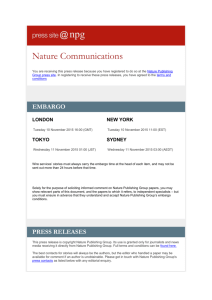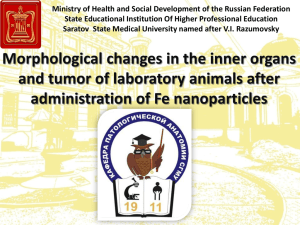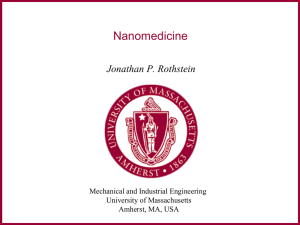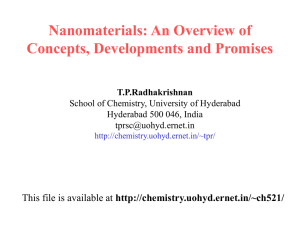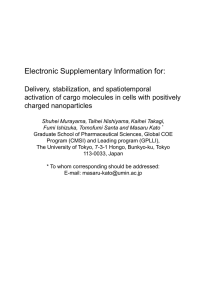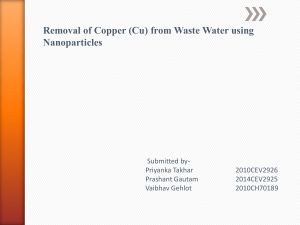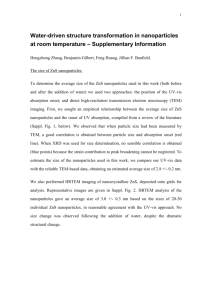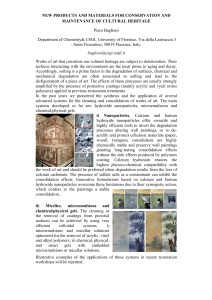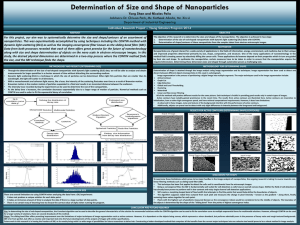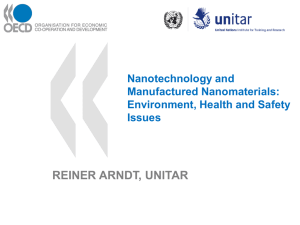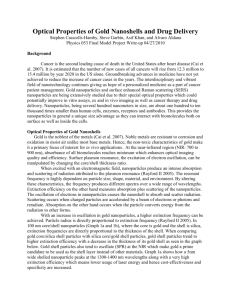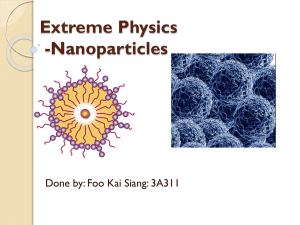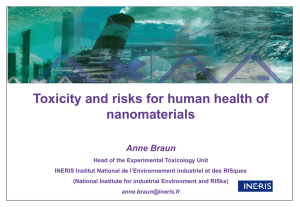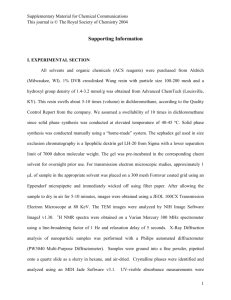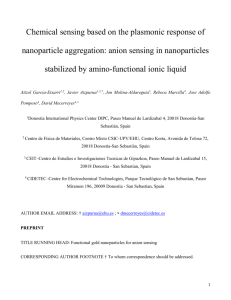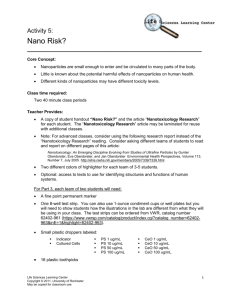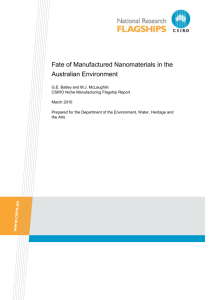2010_08_12_Ihor_Nanoparticles
advertisement
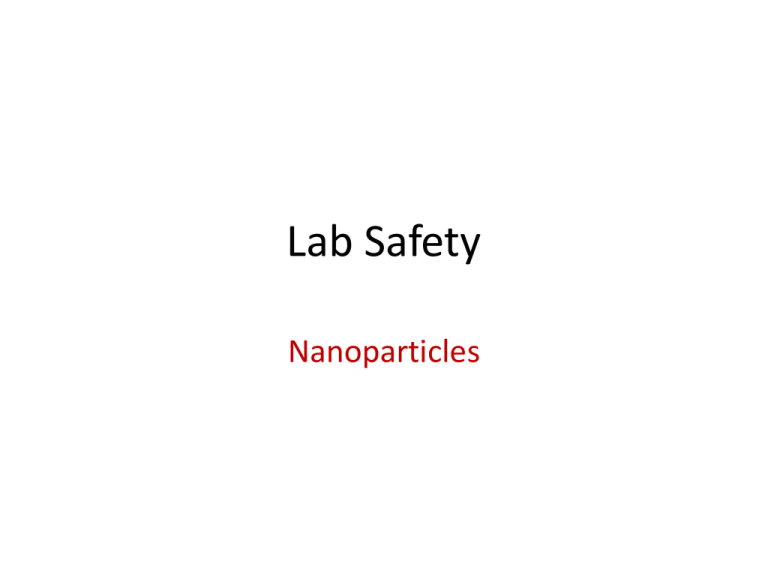
Lab Safety Nanoparticles Background • The ASTM Committee on Nanotechnology has defined a nanoparticle as a particle with lengths in two or three dimensions between 1 and 100 nanometers (nm). Nanoparticles can be composed of many different base materials and may be of different shapes including: nanotubes; nanowires; and crystalline structures such as fullerenes and quantum dots. • Nanoparticles or nanomaterials used in laboratory experiments will be likely in one of three forms: a powder, in suspension, or in a solid matrix. Safety Issues – Why are we concerned? • The ultrasmall particle size permits the particles to be carried deeply into tissues • The molecular structure of nanoparticles and the relatively greater surface area confer on these particles different chemical reactivities than for larger structures made from the same elements or molecules. • Nanoparticles present a unique challenge from an occupational health perspective as there is a limited amount of toxicological data currently available for review. The National Institute of Occupational Health and Safety (NIOSH) and other agencies are currently studying this issue, and improved guidelines for handling and disposal will be forthcoming. Currently, agencies charged with providing safety guidelines, including NIOSH, the NIH and the EPA, promote the incorporation of cautionary measures in research, with a view toward minimizing or eliminating exposures to nanoparticles. Exposure Pathways • • • • Inhalation. Respiratory absorption of airborne nanoparticles may occur through the mucosal lining of the trachea or bronchioles, or the alveolus of the lungs. Certain nanoparticles appear to penetrate deep into the lungs and may translocate to other organs or pass through the blood-brain barrier Thus, whenever possible, nanoparticles are to be handled in a form that is not easily made airborne, such as in solution or on a substrate. Dermal absorption. In some cases nanoparticles have been shown to migrate through skin and be circulated in the body. If the particle is carcinogenic or allergenic, even tiny quantities may be biologically significant. Skin contact can occur during the handling of liquid suspensions of nanoparticles or dry powders. Skin absorption is much less likely for solid bound or matrixed nanomaterials. Ingestion. As with any material, ingestion can occur if good hygiene practices are not followed. Once ingested, some types of nanoparticles might be absorbed and transported within the body by the circulatory system. Injection. Exposure by accidental injection (skin puncture) is also a potential route of exposure, especially when working with animals or needles. Laboratory Safety Guidelines for Handling Engineered Nanoparticles The current practices for working with engineered nanoparticles safely are essentially the same as one would use when working with any research chemical of unknown toxicity If handling or transporting materials outside of a glovebox, workers should wear protective equipment, including • Latex or nitrile gloves when handling nanoparticle powders and nanoparticles in suspension (glove changes should be performed frequently); Outer gloves should always be removed inside the hood or under the influence of local exhaust ventilation and placed into a sealed bag. This will prevent the particles from becoming airborne. • Chemical splash goggles when working with nanomaterials in suspension or dry powdered form; • Lab coats. Lab coats should be laundered on a periodic basis. Do not take lab coats home for laundering; The use of respirators is not generally required for worker protection if you work in a ventilated area. • When purchasing commercially available nanoscale materials, be sure to obtain the Material Safety Data Sheet (MSDS) and to review the information in the MSDS with all persons who will be working with the material. Note, however, that given the lack of extensive data on nanoparticles, the information on an MSDS may be more descriptive of the properties of the bulk material. • Nanoparticle solutions may be handled on the lab bench once placed in solution. • Transport of nano-materials should employ a sealed secondary containment device. • Work surfaces should be wet-wiped regularly – daily is recommended. Because many engineered nanoparticles are not visible to the naked eye, surface contamination may not be obvious. The cleaning solution should be compatible with the vehicle in which the nanoparticles are suspended. • To prevent ingestion, eating and drinking and chewing gum are not allowed in laboratories • Report any safety concern Managing Spills • All spills involving nanoparticles should be treated like a hazardous material spill and cleaned up immediately. • The person cleaning up should wear double nitrile gloves and either vacuum up the area with a HEPA filtered vacuum or wet wipe the area with towels, or combination of the two. • For spills that might result in airborne nanoparticles, proper respiratory protection should be worn, such as a respirator with NIOSH-approved filters that are rated as N-, R- or P-100 (HEPA). • Do not brush or sweep spilled/dried nanoparticles. Waste Disposal Procedures • Since the toxicology and environmental fate of nanoparticles is still largely unknown, all nanoparticle waste (solid material and liquids) should be conservatively managed as hazardous waste. • Nanoparticle waste must be placed in an appropriate container and labeled for chemical content in compliance the hazardous waste management requirements.



